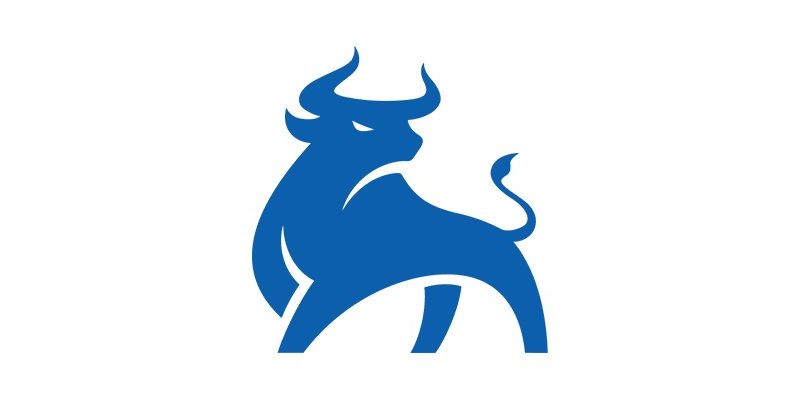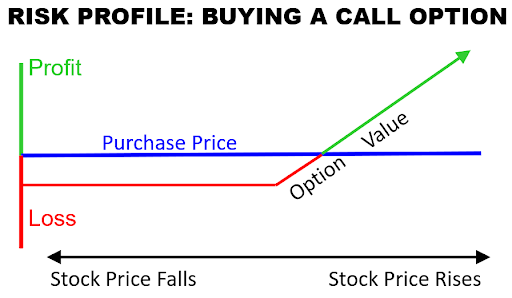What is an Option
Trading options can be the most potent way for individuals to maximize their financial gains. Gaining a better understanding of what drives option prices prepares you to use the right strategy at the right time and avoid mistakes common to less knowledgeable traders.
There are two types of options: Puts and calls. People can choose to buy or sell either option type when opening their positions. This flexibility in trade approaches has resulted in a number of defined trading strategies.
The options market is connected to, yet separate from the stock market. Research done to make investment decisions on a stock can be applied with options instead but with a significant difference: Option approaches can be designed to profit on directional and also non-directional moves.
Using options increases the number of ways a person may choose to profit from price action. Decisions about strike price, expiration date, option type, and whether or not to combine options must be made before a trade.
All these choices add complexity to the decision making process and creates an initial barrier to entry. But once mastered, the possibilities created by various option tactics provide creative ways to profit from all possible chart patterns.
The Origins of Options
The history of options can date back to ancient Greece, when options were used to speculate on olive presses which came from the olive harvest. References to options trading can also be found in Holland in the 17th century during a period called Tulip Bulb Mania, in which demand for tulips ran high — driving up prices.
In 1973, the Chicago Board Options Exchange (CBOE) became the first U.S. exchange to trade listed options. This was the same year that the Black Scholes model was published, which is a mathematical formula for determining the fair market value for call options.
In 1974, the average daily options volume on the CBOE, which were only calls at this time, were 20,000 contracts. Some of the earlier stocks that traded options — and that are still around today — were AT&T (T), McDonald’s (MCD), and Ford (F). Puts, meanwhile, were introduced in 1977. For comparison, the average daily volume for equity options in 2019 was 19.4 million contracts, according to the Options Clearing Corp.
Option Basics
Before we get into too much detail of what an option is and how they work, let’s define some basic information you will need to know.
Options are considered to be special financial instruments, or derivatives, that are based on the value of the underlying stock.
An option contract offers the buyer the opportunity to buy or sell the underlying stock. Each standard option contract is equivalent to 100 shares of the underlying asset.
Let’s define some key options terms before going any further:
- Call options give the trader the right, but not the obligation, to buy the stock at a stated price within a specific time period.
- Put options give the trader the right, but not the obligation, to sell the asset at a stated price within a specific time period.
- Expiration date is the date at which an options contract is no longer valid and the holder must exercise their option. For standard contracts, it is usually the third Friday of the contract month.
- Strike price is the price at which the option holder will buy or sell the underlying stock at expiration.
- Moneyness refers to the relationship between the strike price of an option and the stock price. An option can be classified three ways: in the money (ITM), at the money (ATM), and out of the money (OTM). ITM option have moneyness. This means their strike price is favorable to the stock price if the option were to be exercised. The ATM option is the one closest to the current price of the stock and it may also either be ITM or OTM. OTM options have no moneyness. The exercise price for these options are unfavorable to the stock price and if exercised, would cost money.
The bottom line — every option contract will have a standard set of metrics that dictate their price.
Options are typically bought and sold through online or retail brokerage firms.
Key Takeaways
- Options are financial derivatives that give buyers the right, but not the obligation, and puts the seller under obligation to buy or sell an underlying asset at a specific price and date.
- Call and put options form the base for a wide range of options strategies designed for hedging, income, or speculation.
So, now that you have an understanding of what the basics of options are, let’s briefly discuss how they work.
How Options Work
Options are an extremely powerful, yet versatile financial product that are designed to allow a trader to express their viewpoint in more creative and potentially profitable ways than just trading stocks alone.
Brokers do require individuals who want to trade options to apply for options trading permissions. Permissions are granted in levels according to account size and options trading experience. Everyone is granted level 1 permission for buying calls and puts and doing covered calls. Other option strategies do require higher permission levels.
In an options transaction, the buyer pays a premium for the rights granted by the contract, to buy or sell a stock at a specific price on a set date.
Typically, options are broken down into these four main viewpoints:
Calls:
- Buyers — bullish
- Sellers — bearish
Puts:
- Buyers — bearish
- Sellers — bullish
Call option buyers hope prices will rise. Remember, calls grant the right to buy stock. Because call options grant the right to buy stock, strike prices below the current price of the stock have intrinsic value and are in the money. Strike prices above the current price have no intrinsic value and are out of the money. The call price will rise in value proportional to how far the current price is above the strike price.
It’s the opposite for put options which grant buyers the right to sell stock. Put option buyers hope prices will fall. Because put options grant the buyer the right to sell stock, strike prices below the current price of the stock have no intrinsic value and are out the money. Strike prices above the current price have intrinsic value and are in the money.
There are a range of expirations dates available to choose from. Options with expiration dates further out in time are more expensive but do provide more time for the expected move to happen.
Strike price selection is another decision that must be made when trading options. Out-of-the-money options have no intrinsic value and are therefore less expensive but with less chance of being profitable by expiration. On the other hand, in-the-money options do have intrinsic value making them more expensive and more likely to have value at expiration. The deeper-in-the-money one goes, the more expensive the option becomes as intrinsic value increases…though time value simultaneously becomes less expensive as strike prices go deeper in the money.
Option contracts usually represent 100 shares of the underlying security. For example, if a trader buys an option listed at $1.00 and each contract represents 100 shares, the cost to acquire that contract will be $100.
What drives the option’s price?
Three main factors drive changes in an option’s price. These are:
- The normal reactions to the flow of orders from buyers and sellers.
- The decreasing amount of time left before expiration.
- Movement in the stock itself.
Understanding the interaction between these factors and the change in an option’s price helps traders select appropriate strategies given the expected move.
What are the “Greeks”?
The Greeks are elements of the option pricing formula used by option market makers to set prices. It’s not necessary to be an expert mathematician to trade options successfully, but it does help to understand the main Greeks which directly impact an option’s potential move. These Greeks affect how an option will respond to price changes of the underlying security. The selection of expiration dates, strike prices, and strategic approach affect the Greeks in different ways.
The “Greeks” are used to describe how an option’s value will theoretically change based on the change in value of the underlying stock, and can be used to gauge the different dimensions of risk involved with taking a position. Some of the major options Greeks are delta, theta, gamma, vega, and rho. The minor greeks include lambda, epsilon, vomma, vera, speed, zomma, color, and ultima.
We’ll define the major Greeks in more detail in separate sections, but here is where you find them when looking at an option chain on thinkorswim, an electronic trading platform by TD Ameritrade.

Advantages of Buying Options
Options give traders a unique and powerful way to speculate on a move stock.
Here are some of the potential benefits to trading options.
- High profit potential:
Options are leveraged instruments meaning any percentage move in a stock will have an amplified effect on the price of an option.
- Call options will have bigger percentage gains relative to stock move if the stock value rises. Theoretically this profit potential is unlimited since there is no cap to a potential move.
- On the other hand, put options will experience bigger percentage gains relative to a stock move if the stock loses value. Theoretically put profit potential is capped by the stock reaching zero value.
- Limited losses: One of the main reasons for buying options is to control risk. The total amount risked is limited to the total amount paid for that contract with no obligation to perform under the terms of the option contract.
- Lowered risk: Options are also used to lower risk when trading. For instance:
- If you are long a stock, you are able to purchase a put option to protect your downside risk on the trade. This is better known as a protective put strategy.
- If you are short a stock, you are able to purchase a call option to protect your upside risk on the trade. This is better known as a protective call.
- Reduced cost of entry: Many traders use options to gain leverage and make their trading capital go further. For example, to purchase 100 shares of AAPL at $325 apiece will cost the trader $32,500. Alternatively, the trader can purchase one call option on AAPL priced at $1.82. This will cost the options trader $182 to control 100 shares of Apple.
Here is a payout diagram for a long call position:

Here is the payout diagram for a long put position:

Wrapping Up
The history of options trading can date back to Ancient Greece. Today, options have become a tremendously powerful and flexible tool that can yield massive returns, all while minimizing losses to one’s trading account. Each option contract accounts for 100 shares of the stock, and gives the buyer the right, but not the obligation, to buy (or sell) the underlying at a specific price at a specific time.
Options come in two types: calls and puts. Long calls allow traders to take a bullish position on the underlying asset, while long puts can be used to make a bearish bet.
Options buyers pay a premium to purchase a contract, which is also the maximum risk on the trade. An option’s price is calculated using a mathematical formula that includes several factors including the stock price and time until expiration, while traders also use the “Greeks” to determine risk on each option trade.
There are multiple option strategies that can be used by traders to take advantage of any market environment. We’ll take a closer look at these strategies in subsequent sections.



